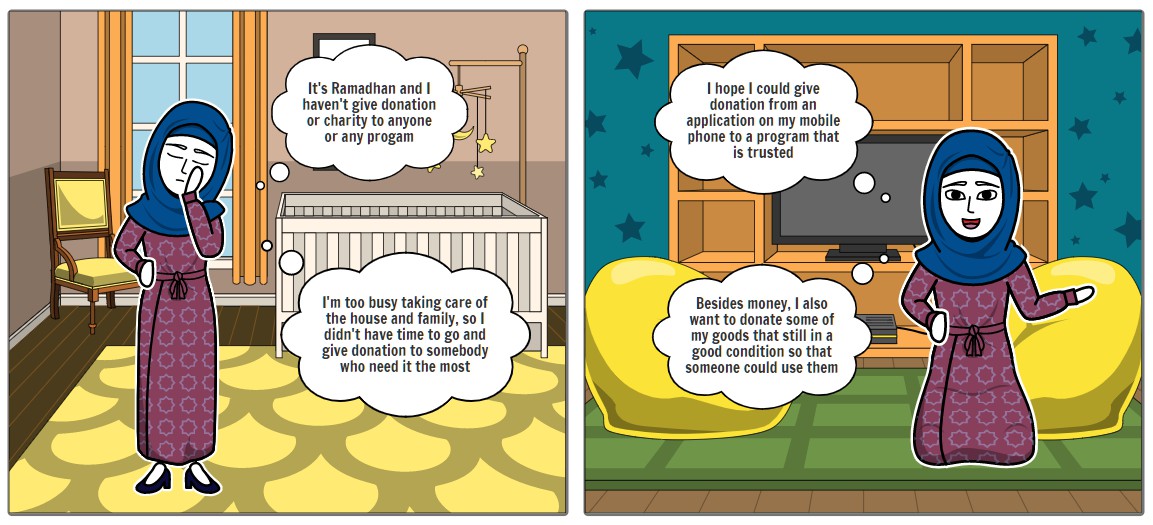Before building a product or an application, we must already know the answer to these questions: “What are the purposes of this application?”, “Who will use this application later?”, and “What are the user’s needs so that they have to use this application?”. Because if we haven’t, why would we create the application in the first place? Defining the goals, target users, and user’s needs are not easy, if we are so clueless then we have to do some research and gather the market data beforehand, so we have some real rationale to create the application. There are so many ways to do this research, one way that we choose to have a better understanding of the user’s needs for building Industri Pilar is that we create, gather, and analyze the user’s persona, scenarios, and storyboards. From that data, we could define the application’s requirements that will fulfill the target user’s needs to reach their goals.
What is Persona and how do we make it?
Taken from Interaction Design Foundation, persona is fictional character, which we create based upon our research in order to represent the different user types that might use our service, product, site, or brand in a similar way. Creating a persona helps the designer and developer to understand users’ needs, experiences, behaviors and goals. We use persona to build empathy with target users and focus on their world. We should always create persona from observations about real users, and never be invented out of our assumptions about our users. From the perspective of the persona, we could create scenarios and storyboards based on the persona’s behavior.
To create a persona, some information that we could define are:
Photo
Name
Gender
Age
Address
Occupation or daily activities explanation
Motivation to use the product or application
Goals to use the product or application
Behavioral considerations
Frustrations about the goals
Quotes or principles about the goals
After we define those information, we place the information in a persona design template so that we could see the overall information in one place neatly. These are the Industri Pilar’s main user persona, the first one is Aisyah as the admin of Industri Pilar and the second one is Susi as the customer of Industri Pilar.

Industri Pilar's User Persona: Aisyah

Industri Pilar's User Persona: Susi
How to create scenarios and storyboards?
To create scenarios, we could write a short paragraph that explains the persona’s goals and considers the persona’s background and behavior. For example, in our case:
“Bu Susi wants to give money and goods donation to someone or a program that needs those while in Ramadhan. As a housewife that took care of the house and the family, Bu Susi didn’t have the time to give the donation by herself. She wants to give donations from her mobile phone to a trusted program and then the donation goods will be picked-up from her home. So that she could give donations from her home without having to leave her family.”
From this scenario, we could create a storyboard that visualizes the scenario. There are so many applications that could help us to create storyboards, one of the good applications that we used was StoryboardThat. Here is the storyboard example based on the previous scenario:

Bu Susi's Donation Storyboard
How to Create Requirements?
As we could see, now we already know our user’s background, story, and needs from the personas, scenarios and storyboards. We only need to create the application’s requirements based on the gathered data and observations. Taken from Usability Geeks, some information that we could define to create the requirements are:
Requirement: The name of the requirement
Number: A unique number that identifies the requirement
Description: A short description of the requirement
Rationale: The reason why this requirement is needed
Success criteria: What determines that this requirement has been well implemented
In this case, one of the Industri Pilar’s requirement examples is:
Requirement: Money and Goods Donation
Number: PBI-1
Description: Users should be able to choose a charity program and donate money and goods to the charity program, after that the goods donation is picked-up from the user’s home
Rationale: Users want to donate money and goods to a charity program from their home
Success criteria: The user’s money and goods donation is received by the charity program
That’s all we need to do to understand the user’s needs to build a product or application that could be the solution to the user’s needs. I hope that this blog could help you to define and create your own personas, scenarios, storyboards, and requirements for your own product!